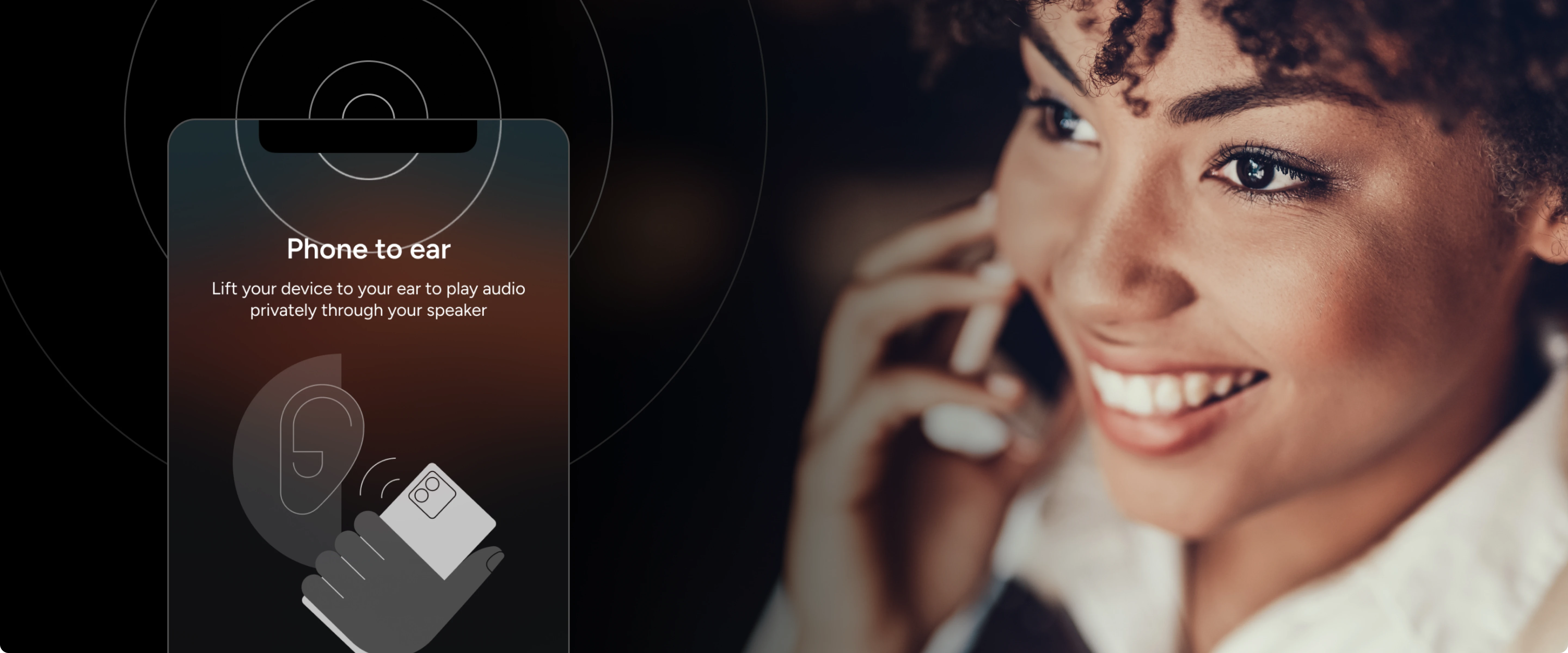
Unlocking the power of audio for every visitor. Headphones optional.
No headphones? No problem. Audio Access+ can transform your visitors' phones into an audio guide with phone-to-ear audio playback.

Audio is more popular than ever
We’re in the midst of a new golden age of audio. Driven by the podcast boom, spoken word content has become part of daily life for millions. Nearly half of the U.S. population now listens to spoken word audio every day—an all-time high—and Australians are listening even more. For the first time, mobile phones have become the most common way people tune in. At Pladia, we’re seeing this translate to the cultural sector in our internal analytics: visitors who engage with multiple audio segments spend three times longer exploring exhibits.
The power of audio isn’t just reflected in numbers though, we hear time and time again in our testing sessions that audio helps visitors to connect more deeply with a venue and the objects and spaces within. As one of our research participants put it:
"You'd prefer to listen to something as you walk around rather than just read information... If someone's talking to you, I feel like there's a bit more engagement or a story behind it."
So we know how important and powerful it can be, but there are common challenges when it comes to audio as well…
Challenges with audio experiences

Pladia was born out of Art Processors, a company with over 14 years of experience in the cultural sector. In that time, we've seen just how powerful audio can be and also how tricky it is to get right. Some common challenges include:
1. Visitors don’t always carry headphones
During testing sessions, we've found that around 60% of visitors don't usually bring headphones with them to a museum or art gallery visit. This makes BYOD (bring-your-own-device) audio guides less accessible, unless institutions provide hardware and even then, some visitors prefer to have a private experience, as this research participant described:
"I don't think I would use public headphones either. Usually that involves talking to people which I don't like."
2. Loudspeaker audio disrupting the visitor experience
The Guardian recently asked their readers: “Why are you expected to be quiet in an art gallery?” All of the responses are worth a read, but "Liv's" response sums up how we feel about the question nicely:
"Being quiet is different from being silent. No one should enforce silence on anyone, but if a gallery is not quiet, then meaningful, concentrated reflection is much more difficult. It is also a matter of respect."
For visitors who don't bring headphones, some resort to playing audio from their loudspeaker which can disrupt the calm, shared space of an exhibition.
3. Accessibility gaps
Without flexible delivery methods, valuable stories and context remain out of reach for many.
- Textual content is usually only presented in a single language, which is limiting.
- Hearing-impaired visitors often prefer transcripts to spoken word audio.
- Vision-impaired visitors often rely on audio over text.
Unlocking the power of audio for every visitor

Pladia's Audio Access+ feature is designed to address all of these common challenges by giving visitors three flexible options for the duration of their visit:
- Use headphones for private, immersive listening
- Phone-to-Ear playback for headphone-free audio (just like taking a call)
- Read a transcript for silent or accessible engagement
This BYOD approach eliminates the need for shared hardware, supports multiple languages, and works across all modern smartphones —unlocking your audio investment for everyone with a smartphone. No logins or downloads are required either, because it's all accessible through a combination of a Progressive Web App on the visitors' browser and 'mini apps', which we'll describe more in the next section.
The experience
Rather than just explaining how it works, you can try for yourself by scanning the QR code here:

Or watch the video below for a short demonstration of how the feature works.
Bringing audio to more visitors
Whether you've already invested time, care, and creativity into crafting audio content , or you're just starting to explore its potential , Audio Access+ helps you unlock its full value. It ensures every visitor can engage with audio in a way that suits them, on their own terms.
With Audio Access+, audio content adapts to the visitor—not the other way around.
Ready to bring seamless audio access to your venue?
Try it yourself using the QR code above, or get in touch to learn more about how Audio Access+ can help elevate your digital experience.